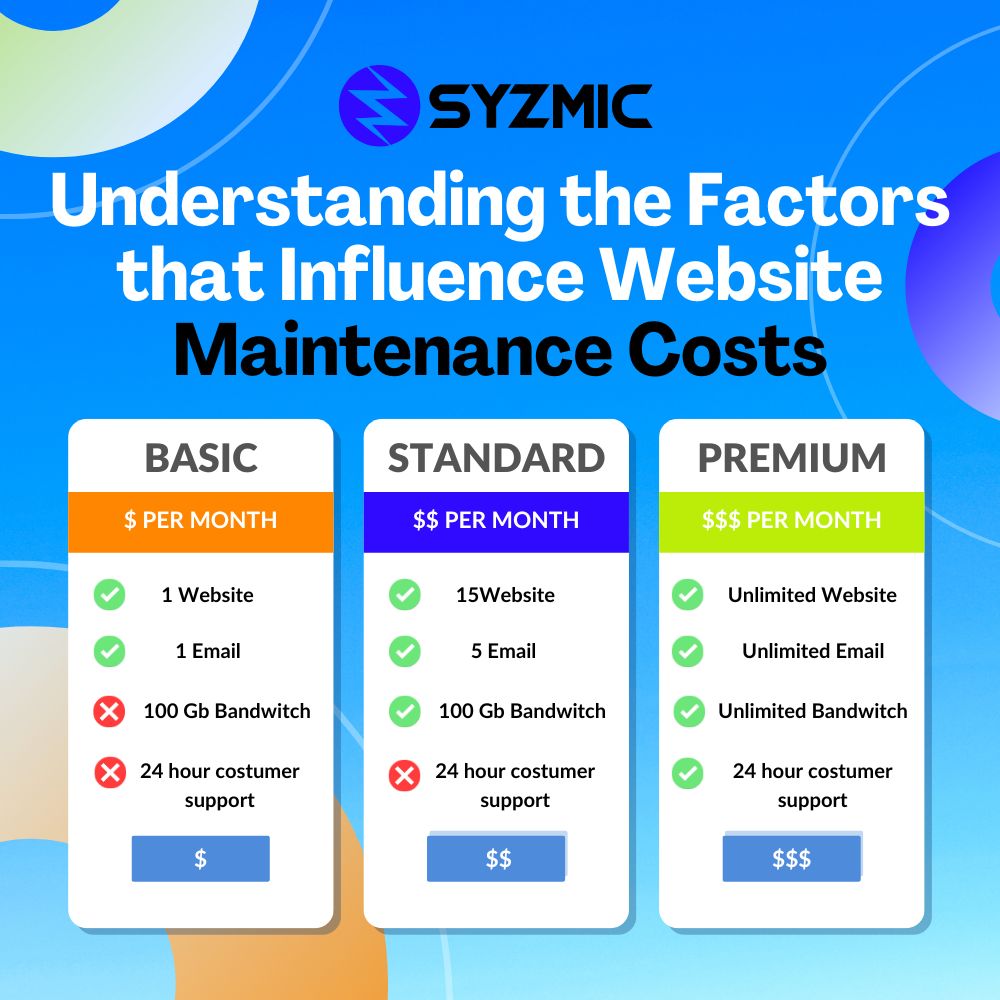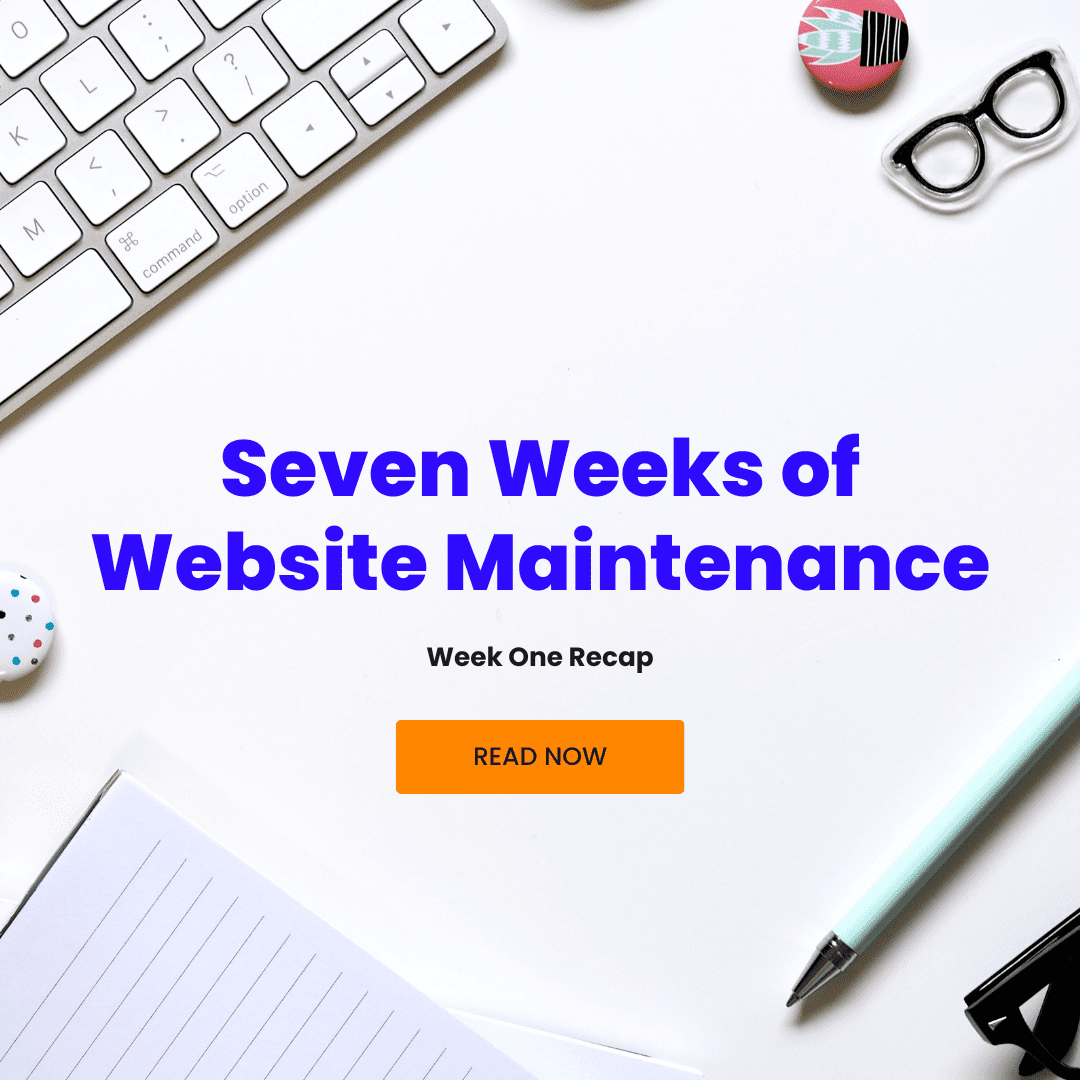In today’s digital landscape, a website is more than just an online presence – it’s a critical component of your business’s success. A well-maintained website ensures seamless user experiences, higher search engine rankings, and better security. However, when it comes to website maintenance, one of the most common questions is: “How much does it cost?” The answer to this question isn’t straightforward, as several factors come into play when determining website maintenance costs. In this article, we’ll delve into the key factors that influence website maintenance costs, helping you gain a deeper understanding of what goes into this crucial investment.
1. Complexity of the Website:
The complexity of your website is a significant determinant of maintenance costs. A simple static website with a few pages will likely have lower maintenance costs compared to a dynamic website with e-commerce functionality, databases, and interactive elements. Dynamic websites often require more frequent updates, security patches, and compatibility checks, which can increase maintenance expenses.
2. Size of the Website:
The size of your website, measured in terms of pages and content, also affects maintenance costs. The more pages and content you have, the more time and effort will be required to ensure everything is up-to-date, free of errors, and optimized for performance. Additionally, larger websites may need more resources for backups and data storage, contributing to higher costs.
3. Frequency of Updates:
Regular updates are essential to keep your website functioning optimally and to address security vulnerabilities. The frequency of updates – whether they’re related to content, plugins, themes, or underlying technologies – can impact maintenance costs. Websites that require frequent updates, such as e-commerce platforms or news websites, will naturally have higher maintenance expenses.


4. Type of Content:
The type of content on your website can influence maintenance costs. Websites heavy on multimedia content, such as videos and high-resolution images, may require more server space and bandwidth, leading to higher hosting costs. Moreover, multimedia content often needs careful optimization to ensure fast loading times, which adds to maintenance efforts.
5. Platform and Technology:
The underlying platform and technologies your website is built upon play a crucial role in maintenance costs. Websites built on popular content management systems (CMS) like WordPress, Joomla, or Drupal often benefit from a wide range of plugins and themes. However, these platforms require regular updates to ensure security and compatibility. Custom-built websites might have higher initial development costs but could result in more tailored maintenance needs.
6. E-commerce Functionality:
For e-commerce websites, maintenance involves not only content updates but also managing product listings, payment gateways, and security measures. E-commerce platforms must adhere to strict security standards to protect customer data, which can lead to higher maintenance expenses.
7. Security and Compliance Requirements:
Security is a paramount concern for any website. The level of security and compliance required can significantly impact maintenance costs. Websites that deal with sensitive user information, such as personal details or payment data, need robust security measures, regular vulnerability assessments, and possibly even legal compliance audits.
8. Mobile Responsiveness:
In the mobile-first era, ensuring your website is responsive and performs well on various devices is essential. Achieving and maintaining mobile responsiveness may involve additional design, testing, and optimization efforts, contributing to maintenance costs.
9. SEO Optimization:
Search engine optimization (SEO) is crucial for driving organic traffic to your website. Regularly optimizing content, meta tags, and other SEO elements can influence maintenance costs. SEO best practices evolve, requiring ongoing adjustments to maintain high search engine rankings.
10. User Experience (UX):
Providing a seamless user experience is vital for retaining visitors and achieving your website’s goals. Continuously assessing and enhancing user experience elements, such as navigation, page load times, and accessibility, can impact maintenance costs.
11. Third-Party Integrations:
Websites often integrate third-party tools and services, such as social media plugins, analytics platforms, or marketing automation tools. While these integrations enhance functionality, they can also introduce complexities in terms of updates and compatibility, affecting maintenance expenses.
12. Geographic Considerations:
The geographic location of your website’s users can influence maintenance costs. Websites with a global audience might need to consider content delivery networks (CDNs) to ensure fast loading times for users across different regions.
13. Service Level Agreements (SLAs):
Your maintenance service provider’s SLA can impact costs. Higher service levels, such as faster response times and guaranteed uptime, might come with higher fees but can be crucial for businesses that rely heavily on their online presence.
14. In-House vs. Outsourced Maintenance:
Deciding between in-house and outsourced maintenance can have cost implications. While in-house maintenance gives you more control, it can lead to higher labor costs, as you’ll need dedicated staff for updates, security, and troubleshooting.
Conclusion:
Website maintenance costs are influenced by a multitude of factors, each playing a role in shaping the final expenses. As you evaluate your website maintenance strategy, it’s essential to consider the unique characteristics of your website, your business goals, and the user experience you aim to provide. While maintenance costs are an investment, they are a necessary one to ensure your website remains a valuable asset that continues to contribute to your online success. By understanding these influencing factors, you’ll be better equipped to make informed decisions that align with your budget and objectives.








0 Comments